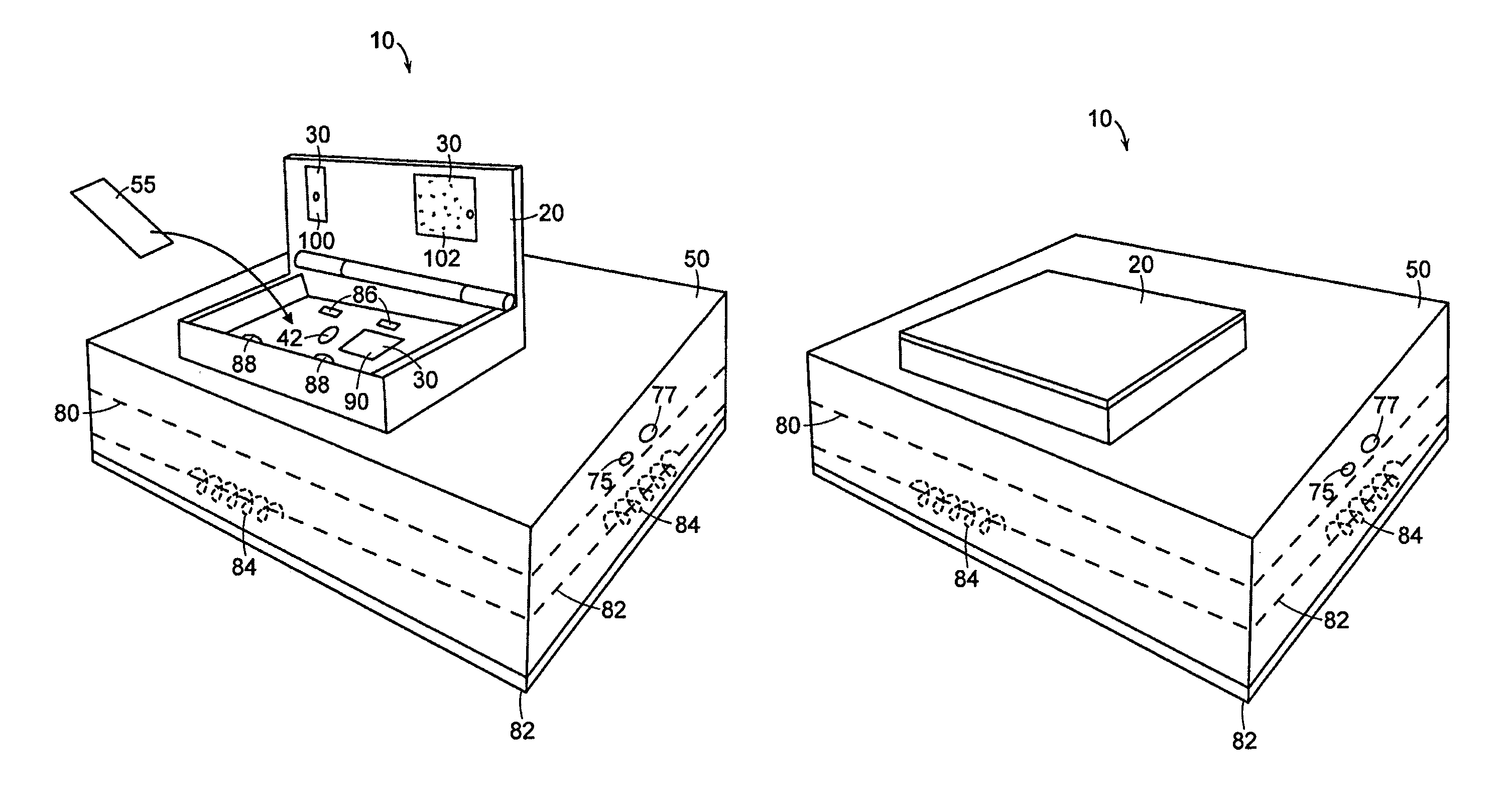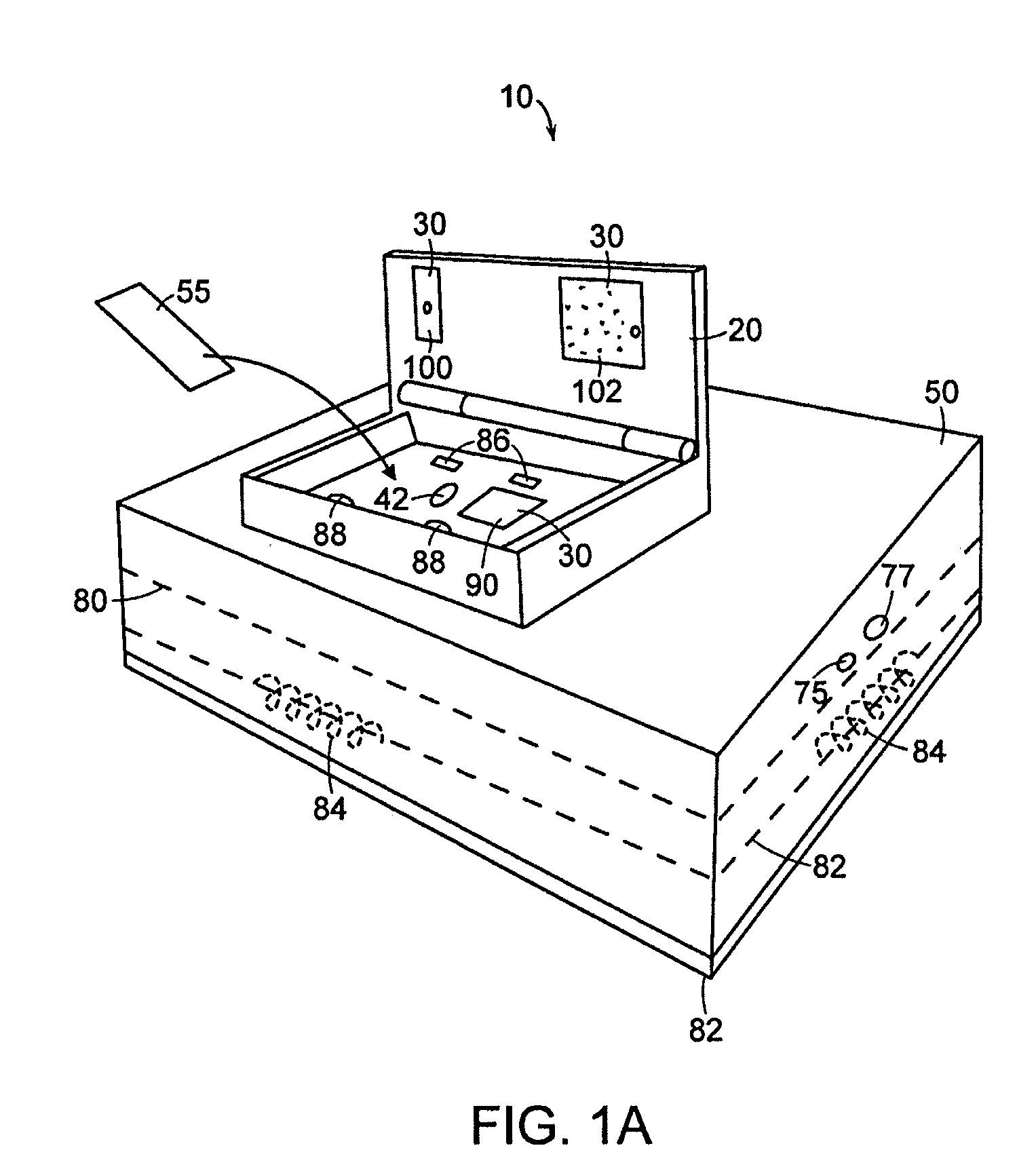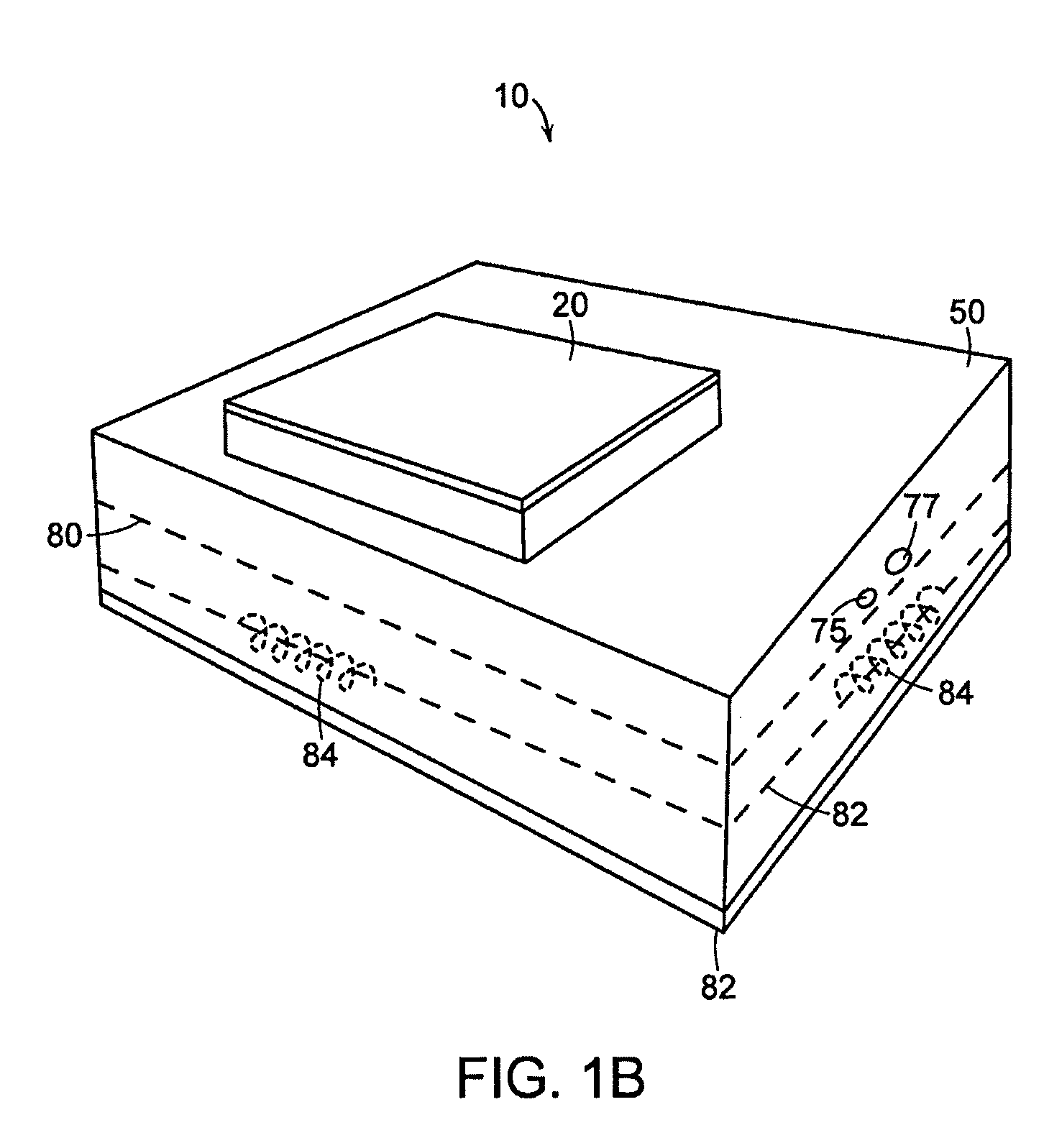Ruggedized apparatus for analysis of nucleic acid and proteins
a nucleic acid and protein technology, applied in the field ofruggedized apparatuses, can solve problems such as data collection disturbances, achieve the effects of reducing the amount of sample and reagent, and fast and rugged nucleic acid sequencing and separation devices
- Summary
- Abstract
- Description
- Claims
- Application Information
AI Technical Summary
Benefits of technology
Problems solved by technology
Method used
Image
Examples
example 1
[0091]The following example illustrates a forensic use of a ruggedized nucleic acid analysis device in accordance with the present invention. In this example, a ruggedized nucleic acid analysis apparatus similar to the one shown in FIGS. 1A, 1B, and 1C was used to analyze a reference sample.
[0092]The reference sample consisted of an allelic ladder from a commercially available STR kit (AMPFISTR® SGM PLUS®, from Applied Biosystems, Foster City, Calif.) and size standard (GENESCAN™ 400 HD (ROX™) Size Standard, from Applied Biosystems, Foster City, Calif.). The sample was prepared using 2 microliters of allelic ladder, 0.5 microliters of size standard, and 10.5 microliters of deionized water. The sample was denatured prior to analysis by heating the sample to about 90 degrees C. for about 3 minutes followed by rapidly cooling the sample on ice. The sample was then injected into a cleaned microfluidic chip.
[0093]Prior to sample injection, the microfluidic chip was cleaned and conditione...
example 2
[0099]The following example illustrates a DNA sequencing use of a ruggedized nucleic acid analysis device in accordance with the present invention. In this example, a ruggedized nucleic acid analysis device similar to the one shown in FIGS. 1A, 1B, and 1C was used to analyze a sample including a DNA template from an HIV amplicon B.FR.HXB2, with primer GB107. The sample was amplified and labeled with a commercially available cycle sequencing kit (Thermo Sequenase II Dye Terminator Cycle Sequencing Premix Kit) available from Amersham Biosciences, now part of GE Healthcare (Waukesha, Wis.). A cycle sequencing reaction was performed following the manufacturer's recommended procedure. The total sequencing reaction consisted of 750 nanograms of DNA template, 1 microliter of 5 micromolar primer, two microliters of Thermo Sequenase II reagent mix A, 2 microliters of Thermo Sequenase II reagent mix B, and water to bring the total volume to 20 microliters. The reaction was cycled with the fol...
PUM
 Login to View More
Login to View More Abstract
Description
Claims
Application Information
 Login to View More
Login to View More - R&D
- Intellectual Property
- Life Sciences
- Materials
- Tech Scout
- Unparalleled Data Quality
- Higher Quality Content
- 60% Fewer Hallucinations
Browse by: Latest US Patents, China's latest patents, Technical Efficacy Thesaurus, Application Domain, Technology Topic, Popular Technical Reports.
© 2025 PatSnap. All rights reserved.Legal|Privacy policy|Modern Slavery Act Transparency Statement|Sitemap|About US| Contact US: help@patsnap.com



